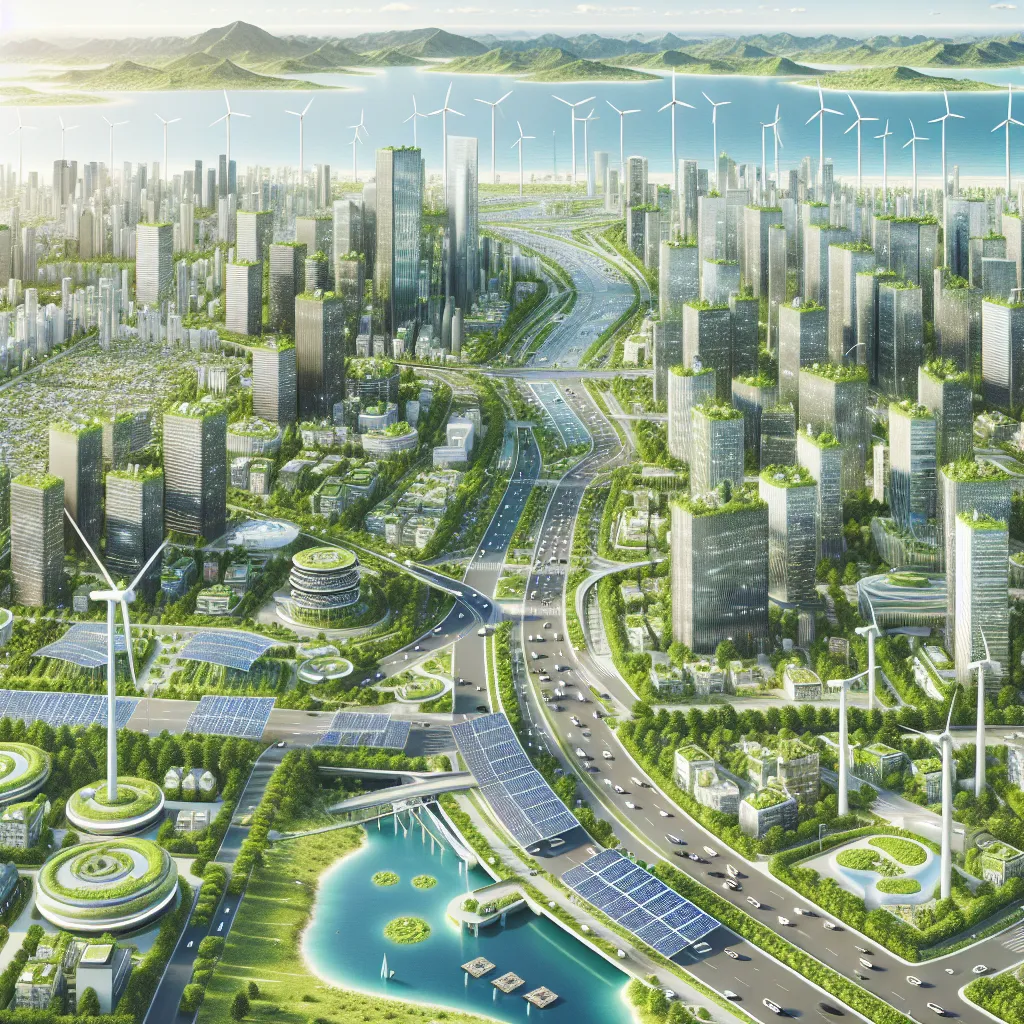Welcome to our IELTS Reading practice test focused on “The Future of Renewable Energy Sources.” This comprehensive test will help you prepare for the IELTS Reading section by providing three passages of increasing difficulty, along with a variety of question types typically found in the actual exam. Let’s dive into this crucial topic and enhance your reading skills!
 Future of renewable energy sources
Future of renewable energy sources
Introduction
The future of renewable energy sources is a topic of great importance in today’s world. As we face challenges related to climate change and dwindling fossil fuel reserves, understanding the potential and implications of renewable energy is crucial. This IELTS Reading practice test will explore various aspects of renewable energy, from technological advancements to economic impacts and global policies.
Passage 1 – Easy Text
The Rise of Renewable Energy
Renewable energy has become increasingly important in recent years as the world seeks to reduce its dependence on fossil fuels and combat climate change. Solar, wind, hydroelectric, geothermal, and biomass are among the most common forms of renewable energy sources. These technologies harness natural processes to generate electricity without depleting finite resources or producing harmful emissions.
One of the key advantages of renewable energy is its sustainability. Unlike fossil fuels, which will eventually run out, renewable sources are naturally replenished and can provide a continuous supply of energy. Additionally, renewable energy technologies are becoming more efficient and cost-effective, making them increasingly competitive with traditional energy sources.
Government incentives and policies have played a significant role in promoting the adoption of renewable energy. Many countries have set ambitious targets for increasing their renewable energy capacity and have implemented feed-in tariffs, tax credits, and other financial incentives to encourage investment in clean energy projects.
Despite the progress made in recent years, challenges remain for the widespread adoption of renewable energy. Intermittency issues, such as the variability of wind and solar power, require innovative solutions for energy storage and grid management. Additionally, the initial costs of installing renewable energy infrastructure can be high, although these costs are generally offset by long-term savings.
As technology continues to advance and economies of scale are realized, the future of renewable energy looks increasingly promising. Many experts predict that renewable sources will play a dominant role in the global energy mix in the coming decades, helping to create a more sustainable and environmentally friendly future.
Questions 1-5
Do the following statements agree with the information given in the passage?
Write
TRUE if the statement agrees with the information
FALSE if the statement contradicts the information
NOT GIVEN if there is no information on this
- Renewable energy sources are finite and will eventually be depleted.
- The efficiency of renewable energy technologies is improving over time.
- Government policies have had no impact on the adoption of renewable energy.
- Wind and solar power face challenges related to intermittent energy production.
- All countries have set the same targets for increasing their renewable energy capacity.
Questions 6-10
Complete the sentences below.
Choose NO MORE THAN TWO WORDS from the passage for each answer.
- Renewable energy sources include solar, wind, hydroelectric, geothermal, and ___.
- One major advantage of renewable energy is its ___.
- Many governments have implemented ___ to encourage investment in clean energy projects.
- The initial ___ of installing renewable energy infrastructure can be high.
- Experts predict that renewable sources will play a ___ role in the future global energy mix.
Passage 2 – Medium Text
Technological Innovations in Renewable Energy
The rapid advancement of technology is revolutionizing the renewable energy sector, paving the way for a more sustainable future. Cutting-edge innovations are addressing long-standing challenges and opening up new possibilities for clean energy production, storage, and distribution.
One of the most significant developments in recent years has been the improvement in photovoltaic cell efficiency. Next-generation solar panels are now able to convert a higher percentage of sunlight into electricity, making solar power more viable in a wider range of geographic locations. Perovskite solar cells, for instance, have shown remarkable potential, with some laboratory prototypes achieving efficiency rates of over 25%.
In the wind energy sector, offshore wind farms are becoming increasingly popular due to their ability to harness stronger and more consistent wind patterns. Floating wind turbines represent a particularly exciting innovation, as they can be deployed in deeper waters where fixed-bottom turbines are impractical. This technology significantly expands the potential for wind energy generation in coastal regions around the world.
Energy storage solutions are also evolving rapidly to address the intermittency issues associated with renewable sources. Advanced battery technologies, such as solid-state batteries and flow batteries, offer higher energy density, longer lifespans, and improved safety compared to traditional lithium-ion batteries. Moreover, innovative concepts like pumped hydro storage and compressed air energy storage are being explored to provide grid-scale energy storage capabilities.
Smart grid technology is another crucial area of innovation that is enhancing the integration of renewable energy into existing power systems. Advanced sensors, communication networks, and data analytics enable real-time monitoring and control of energy flow, helping to balance supply and demand more effectively. This not only improves grid stability but also allows for greater penetration of variable renewable sources.
Artificial intelligence (AI) and machine learning are increasingly being applied to optimize renewable energy systems. These technologies can predict weather patterns, forecast energy demand, and fine-tune the operation of renewable energy installations to maximize efficiency and output. AI-powered energy management systems are also helping consumers reduce their energy consumption and make better use of renewable sources.
As these technologies continue to mature and new innovations emerge, the future of renewable energy looks increasingly bright. The synergy between different renewable sources and supporting technologies is creating a more resilient and efficient energy ecosystem. However, continued investment in research and development, as well as supportive policies, will be crucial to fully realizing the potential of these innovations and accelerating the transition to a clean energy future.
Questions 11-14
Choose the correct letter, A, B, C, or D.
-
According to the passage, what is one of the most significant recent developments in solar technology?
A) The invention of new types of solar panels
B) The increase in photovoltaic cell efficiency
C) The discovery of new locations for solar farms
D) The reduction in the cost of solar panel production -
Why are floating wind turbines considered an exciting innovation?
A) They are cheaper to produce than fixed-bottom turbines
B) They can generate more electricity than onshore turbines
C) They allow for wind energy generation in deeper waters
D) They are more resistant to storms and harsh weather conditions -
Which of the following is NOT mentioned as an advantage of advanced battery technologies?
A) Higher energy density
B) Longer lifespan
C) Improved safety
D) Lower production costs -
How is artificial intelligence being used in renewable energy systems?
A) To replace human workers in energy plants
B) To create new types of renewable energy sources
C) To optimize system operations and efficiency
D) To reduce the need for energy storage solutions
Questions 15-19
Complete the summary below.
Choose NO MORE THAN TWO WORDS from the passage for each answer.
Technological innovations are driving significant improvements in the renewable energy sector. In solar energy, 15 have achieved efficiency rates of over 25% in laboratory settings. For wind energy, 16 are becoming more popular due to stronger and more consistent wind patterns. To address intermittency issues, various energy storage solutions are being developed, including advanced batteries and 17. The integration of renewable energy into existing power systems is being enhanced by 18, which allows for real-time monitoring and control of energy flow. Additionally, 19___ are being applied to optimize renewable energy systems by predicting weather patterns and forecasting energy demand.
Passage 3 – Hard Text
The Economic and Geopolitical Implications of the Renewable Energy Transition
The global shift towards renewable energy sources is not merely a technological revolution; it represents a fundamental restructuring of the world’s energy landscape with far-reaching economic and geopolitical consequences. This transition is reshaping international relations, altering economic power dynamics, and presenting both challenges and opportunities for nations worldwide.
The decarbonization of the global economy through the adoption of renewable energy is expected to have profound effects on traditional energy exporters. Countries that have long relied on fossil fuel exports as a primary source of revenue and geopolitical influence may face significant economic challenges. For instance, oil-rich nations in the Middle East and Russia could see their strategic importance diminish as the world becomes less dependent on their hydrocarbon reserves. This shift necessitates economic diversification strategies to maintain stability and prosperity in a low-carbon future.
Conversely, nations with abundant renewable energy resources or advanced clean technologies stand to gain considerable economic and diplomatic leverage. Countries like China, which has invested heavily in renewable energy manufacturing and deployment, are positioning themselves as leaders in the new energy paradigm. Similarly, nations with vast solar or wind potential, such as Morocco or Australia, could become important energy exporters through technologies like green hydrogen production.
The transition to renewables is also reshaping global supply chains and creating new resource dependencies. While reducing reliance on fossil fuels, it increases demand for critical minerals such as lithium, cobalt, and rare earth elements, which are essential for renewable energy technologies and energy storage systems. This shift is creating new “energy superpowers” and potential geopolitical flashpoints, as evidenced by growing concerns over China’s dominance in rare earth element processing.
Energy security considerations are evolving in the context of renewable energy. Unlike fossil fuels, which are concentrated in specific geographic regions, renewable resources are more evenly distributed globally. This democratization of energy has the potential to reduce international tensions and conflicts related to energy access. However, new vulnerabilities may emerge, such as cybersecurity risks to smart grids or the potential for supply chain disruptions in critical components.
The economic implications of the renewable energy transition extend beyond the energy sector itself. The shift is driving innovation and creating new industries, potentially leading to significant job creation in areas such as clean technology manufacturing, energy efficiency services, and sustainable infrastructure development. However, it also poses challenges for regions and communities that have traditionally relied on fossil fuel industries, necessitating carefully managed “just transition” policies to mitigate economic disruption.
International cooperation and governance structures are adapting to the new energy landscape. Climate diplomacy has become an increasingly important aspect of international relations, with agreements like the Paris Accord shaping national policies and international collaborations. New institutions and frameworks are emerging to manage the complexities of a globalized renewable energy system, such as initiatives to establish common standards for green hydrogen trading or to ensure equitable access to critical minerals.
The financial sector is playing a crucial role in driving and shaping the energy transition. The growing emphasis on Environmental, Social, and Governance (ESG) criteria in investment decisions is redirecting capital flows towards renewable energy projects and away from fossil fuel investments. This shift in financial priorities is accelerating the transition but also raising questions about energy investment in developing economies and the potential for stranded assets in the fossil fuel sector.
As the world progresses towards a renewable energy future, the geopolitical map is being redrawn. Traditional alliances based on fossil fuel trade may weaken, while new partnerships centered on clean technology and sustainable development gain prominence. The ability of nations to navigate this complex transition – balancing economic interests, energy security, and environmental sustainability – will be a defining feature of 21st-century geopolitics and global economic relations.
Questions 20-23
Choose the correct letter, A, B, C, or D.
-
According to the passage, which of the following is a potential consequence of the shift to renewable energy for traditional energy exporters?
A) Increased geopolitical influence
B) Economic challenges and the need for diversification
C) Greater control over global energy markets
D) Improved diplomatic relations with energy-importing nations -
What does the passage suggest about the future of energy security in a renewable-dominated world?
A) It will eliminate all international tensions related to energy
B) It will create new vulnerabilities while reducing others
C) It will make energy security concerns obsolete
D) It will increase dependence on a few energy-rich nations -
How is the financial sector influencing the renewable energy transition?
A) By providing unlimited funding for all renewable projects
B) By maintaining equal investment in both renewable and fossil fuel sectors
C) By redirecting capital towards renewable energy based on ESG criteria
D) By focusing exclusively on energy investments in developing economies -
What role does the passage attribute to climate diplomacy in the context of the energy transition?
A) It has become irrelevant due to market-driven changes
B) It is primarily focused on protecting fossil fuel industries
C) It is increasingly important in shaping international relations and policies
D) It is only significant for developing nations
Questions 24-26
Complete the sentences below.
Choose NO MORE THAN TWO WORDS from the passage for each answer.
- Countries like China, which have invested heavily in renewable energy, are positioning themselves as ___ in the new energy paradigm.
- The transition to renewables is creating new resource dependencies, particularly for ___ that are essential for renewable energy technologies.
- The shift to renewable energy is driving innovation and potentially leading to significant ___ in clean technology and related industries.
Questions 27-30
Do the following statements agree with the information given in the passage?
Write
TRUE if the statement agrees with the information
FALSE if the statement contradicts the information
NOT GIVEN if there is no information on this
- All countries will benefit equally from the transition to renewable energy.
- The renewable energy transition is creating new potential for geopolitical conflicts over resources.
- International cooperation is becoming less important as countries focus on developing their own renewable energy capabilities.
- The renewable energy transition is expected to completely eliminate the need for fossil fuels within the next decade.
Answer Key
Passage 1
- FALSE
- TRUE
- FALSE
- TRUE
- NOT GIVEN
- biomass
- sustainability
- financial incentives
- costs
- dominant
Passage 2
- B
- C
- D
- C
- Perovskite solar cells
- Offshore wind farms
- pumped hydro storage
- Smart grid technology
- Artificial intelligence (AI) and machine learning
Passage 3
- B
- B
- C
- C
- leaders
- critical minerals
- job creation
- FALSE
- TRUE
- FALSE
- NOT GIVEN
This IELTS Reading practice test on “The Future of Renewable Energy Sources” covers a wide range of aspects related to the topic, from basic concepts to complex economic and geopolitical implications. By working through these passages and questions, you’ll not only improve your reading skills but also gain valuable insights into this critical global issue.
Remember to practice time management, as you would in the actual IELTS test. Try to complete each passage and its corresponding questions within 20 minutes. This will help you develop the pace needed for the real exam.
For more practice and insights on related topics, you might find these articles helpful:
- How Renewable Energy is Improving Energy Efficiency
- Impact of Renewable Energy on Electricity Prices
- Renewable Energy Policies in Developing Nations
Keep practicing and expanding your knowledge on various topics to enhance your IELTS Reading performance. Good luck with your preparation!


